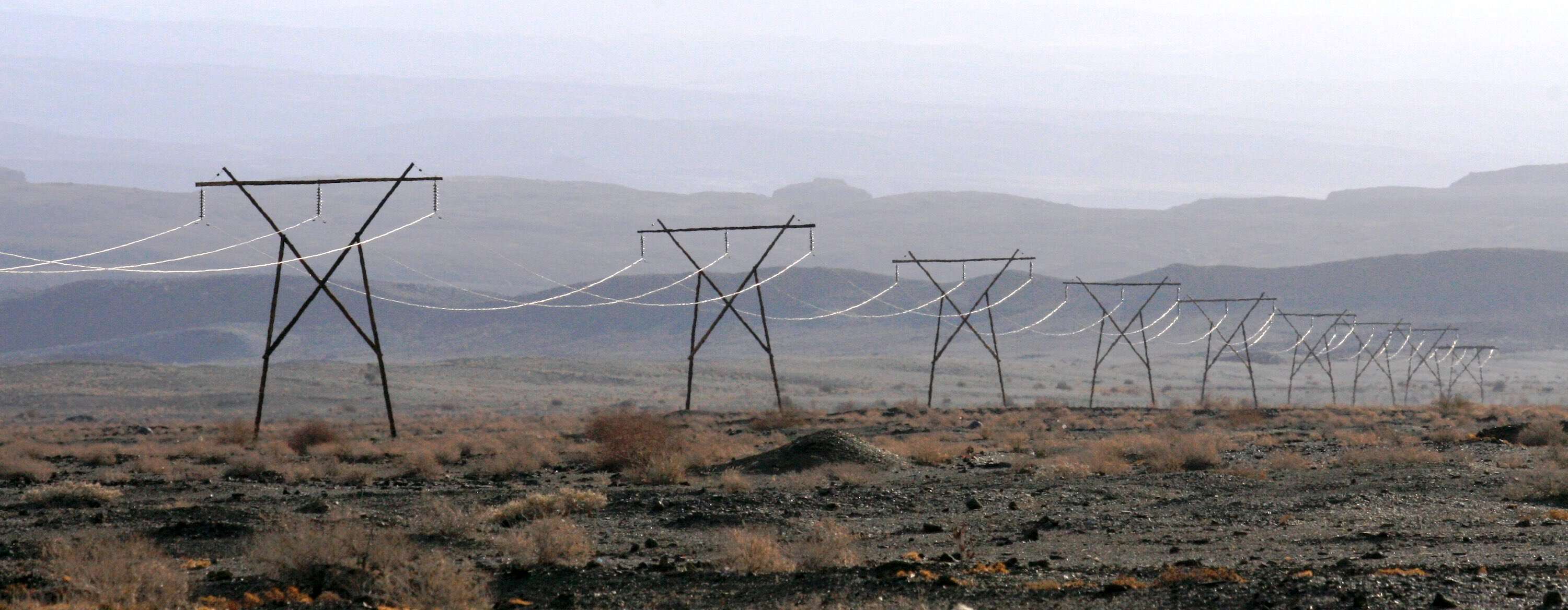
Big birds, big power lines, big problems
7th November 2022
Every time we use electricity from the national power grid, we are complicit in the death of thousands of birds. The power lines that criss-cross our country, and the rest of the world, are death traps for many bird species. Electrocution is one hazard, but a more vexing problem is collision when an unsuspecting bird meets a horizontal wire directly in its line of flight.
The deadly impact of these large, ubiquitous structures on birds has been recognised for many decades now, yet it remains a particularly difficult problem to solve. The demand for electricity is accelerating in our technological world, which will exact an increasingly heavy toll on the birds that share the airspace occupied by transmission lines. We cannot halt society’s energy demands, but nor can we ignore the plight of so many birds. How do we resolve this terrible conundrum?
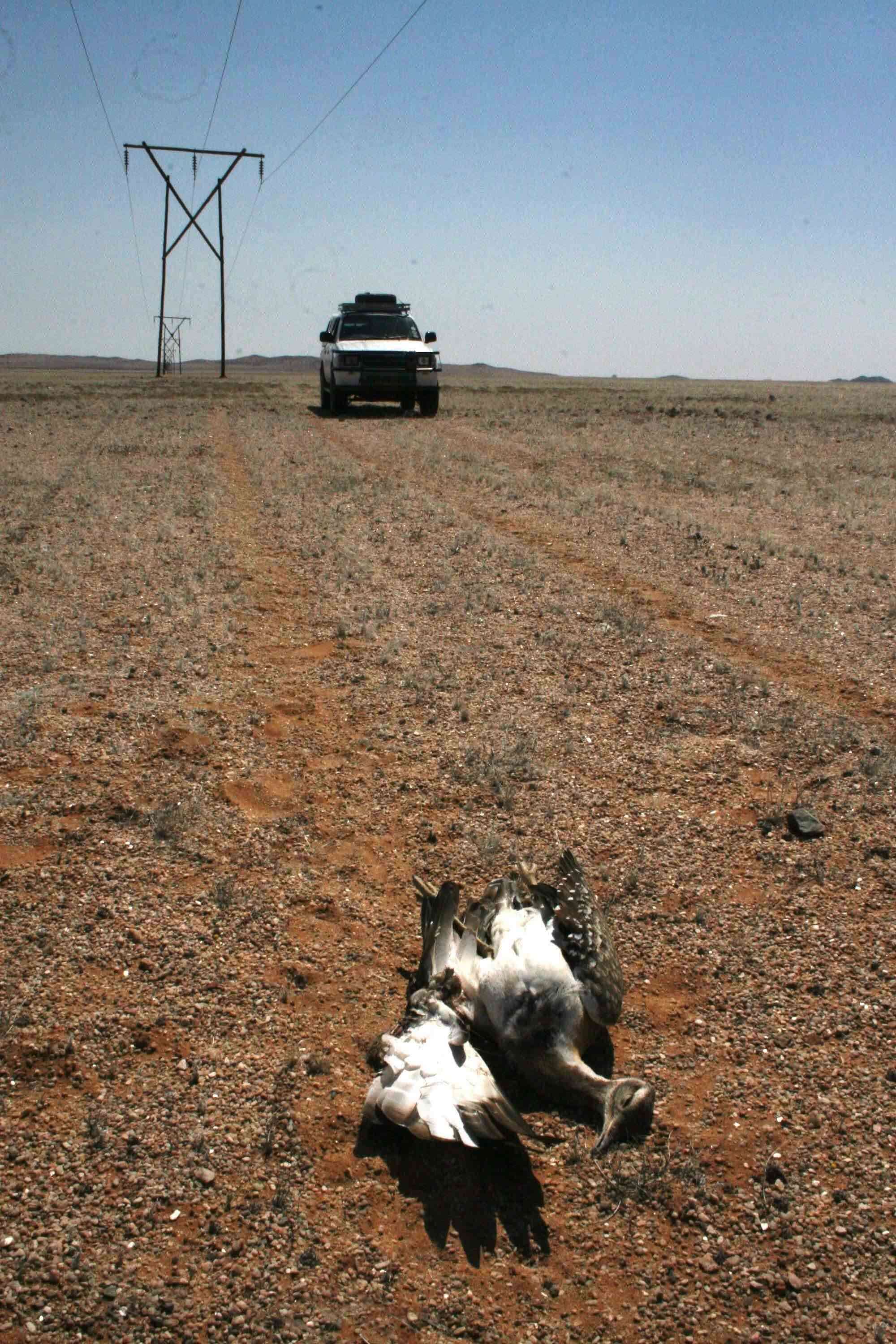
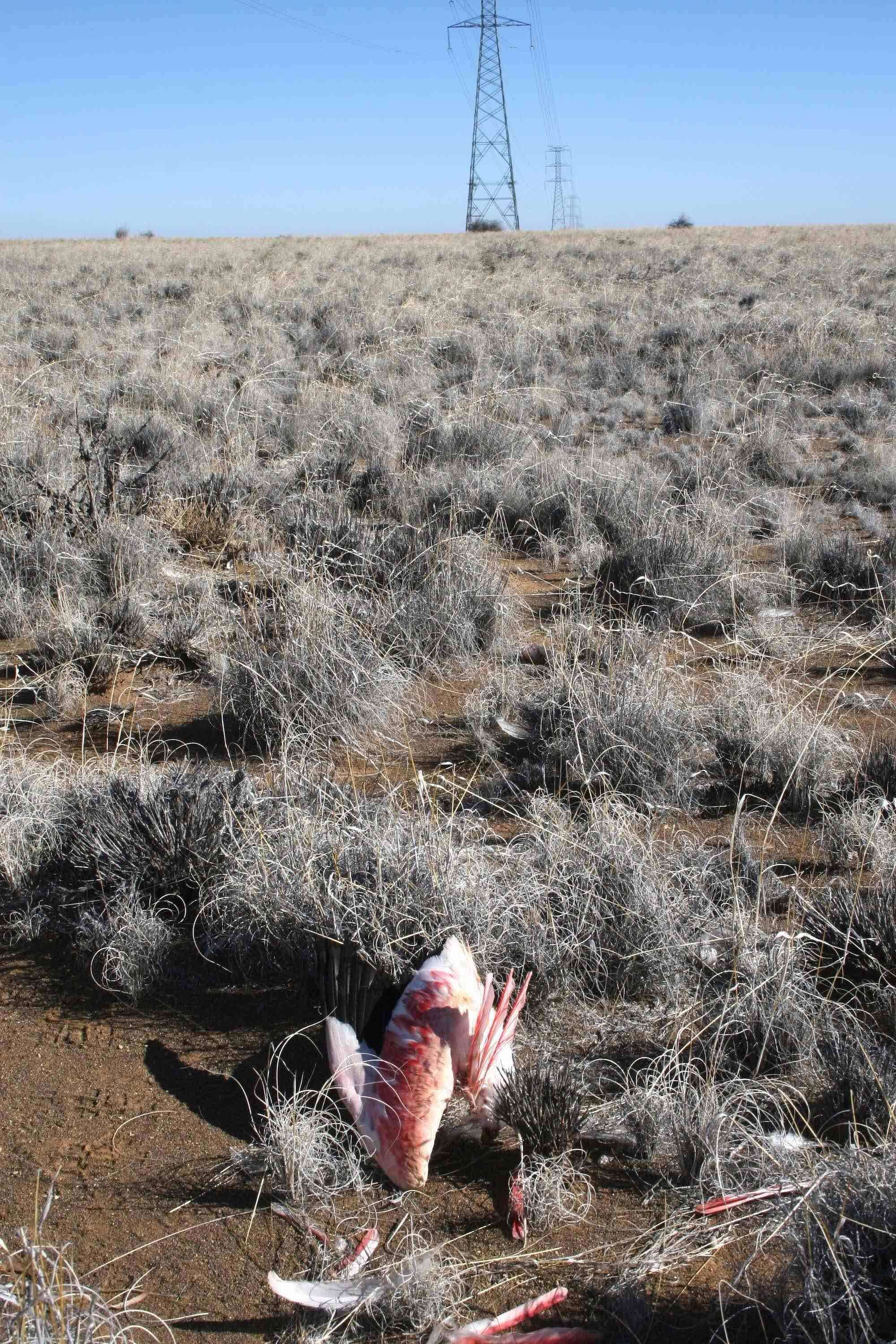
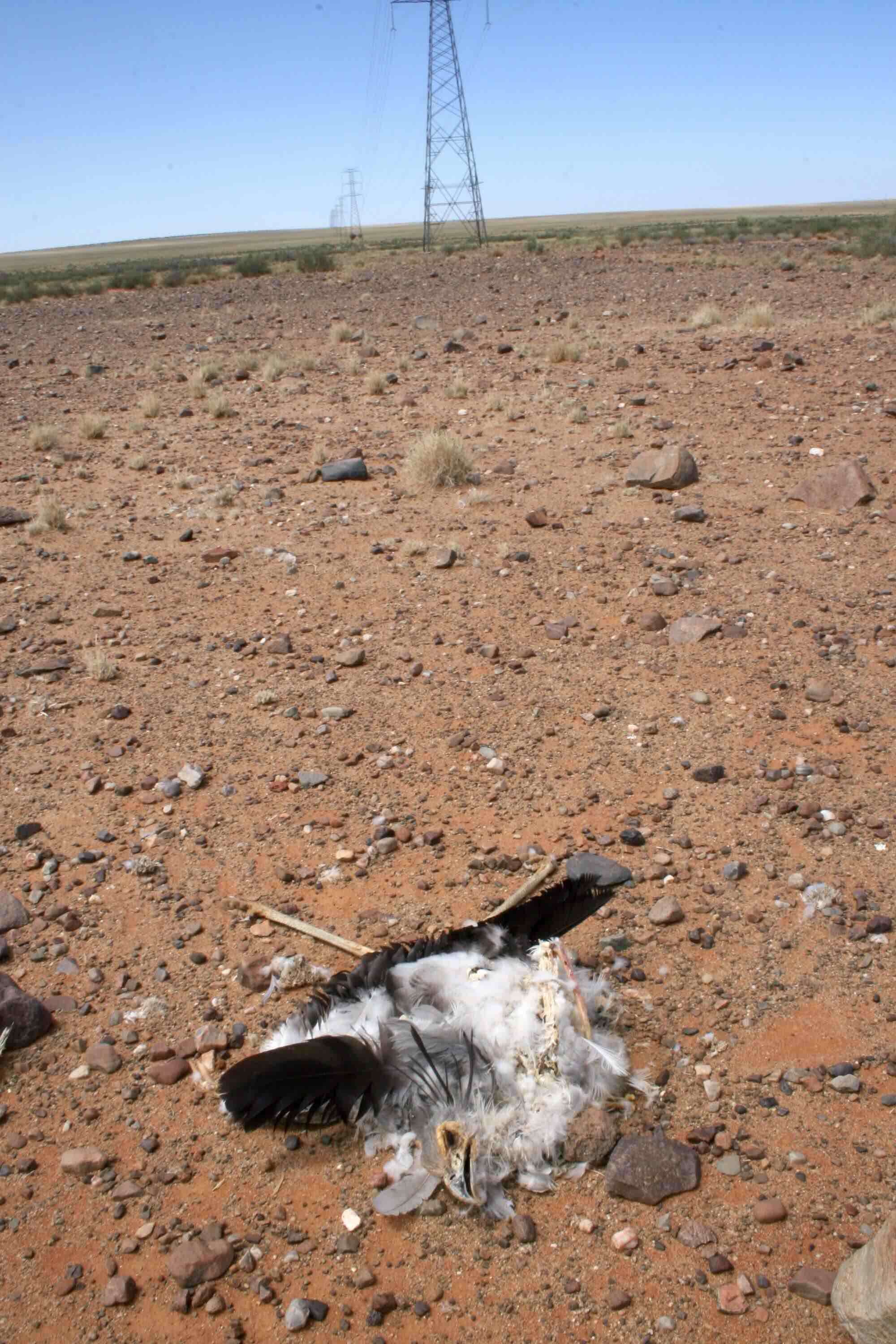
During one year of monitoring a range of power lines in southern Namibia, we recorded carcasses of bustards, korhaans, flamingos, secretary birds, martial eagles, lappet-faced and white-backed vultures, as well as a variety of smaller birds down to the size of a sparrow. Elsewhere in southern Africa, cranes are a particular concern, and the literature includes a long list of other species including many wetland birds and iconic species such as the bearded vulture. Many of the birds most prone to power line collisions in southern Africa are listed as threatened species; it is likely that power lines are a leading cause of their decline.
When it comes to collisions, bustards are amongst the worst hit. The kori bustard has the distinction of being the world’s heaviest flying bird, but at the same time it is clumsy in the air with poor manoeuvrability, and is consequently one of the most frequent victims of power lines. Ludwig’s and Denham’s bustards are similarly affected. Systematic surveys along power lines in the Karoo show that endangered Ludwig’s bustards are killed on transmission lines at a rate of one bird per kilometre per year, which amounts to 47,000 birds annually. For a species with a small population confined to the drier parts of south-western Africa, this mortality rate is surely a major threat to its survival.
The size and height of power lines depends on the voltage they carry; studies reveal that higher voltage lines kill more birds than lower ones. High capacity 220 kV power lines are set up on typical steel lattice towers. Three pairs of parallel electrical cables are vertically separated from each other, with a fourth earth wire above them. These four sets of wires make a curtain about 16 metres deep – the top earth wire is typically 28 metres above the ground, while the lowest wires sag to 12 metres above ground at the midpoint between the towers. Think of a kori bustard flapping along at about 15 metres above ground: the moment it sees the wires ahead, it must climb to about 30 metres to clear the topmost conductor. Often that’s impossible.
Power lines that carry a lower voltage are smaller, and the cables are closer together, so they are both lower in total height and they create a smaller curtain of danger for birds. On the smallest lines, the cables are in a horizontal plane and they do not necessarily have earth wires, thus presenting a smaller obstacle to approaching birds. While these smaller lines take out fewer birds than the larger ones, they are still highly problematic. For example, a 66 kV line in the southern Namib killed 11 Ludwig’s bustards over a distance of 70 km in a three-month period. The bustards had concentrated in this area to feed on a temporary flush of desert grass and insects. Consequently, any size of power line is a hazard for these birds.
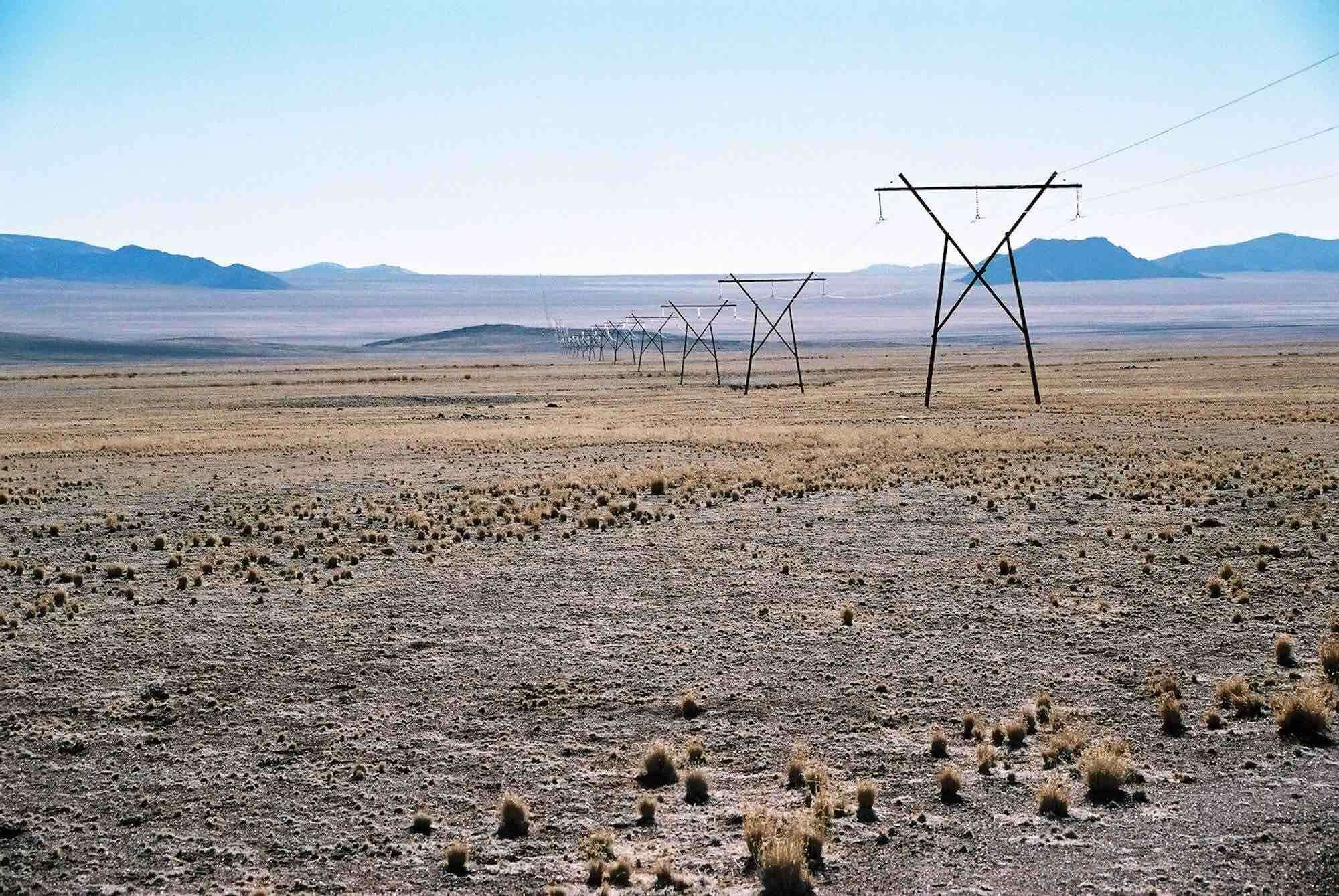
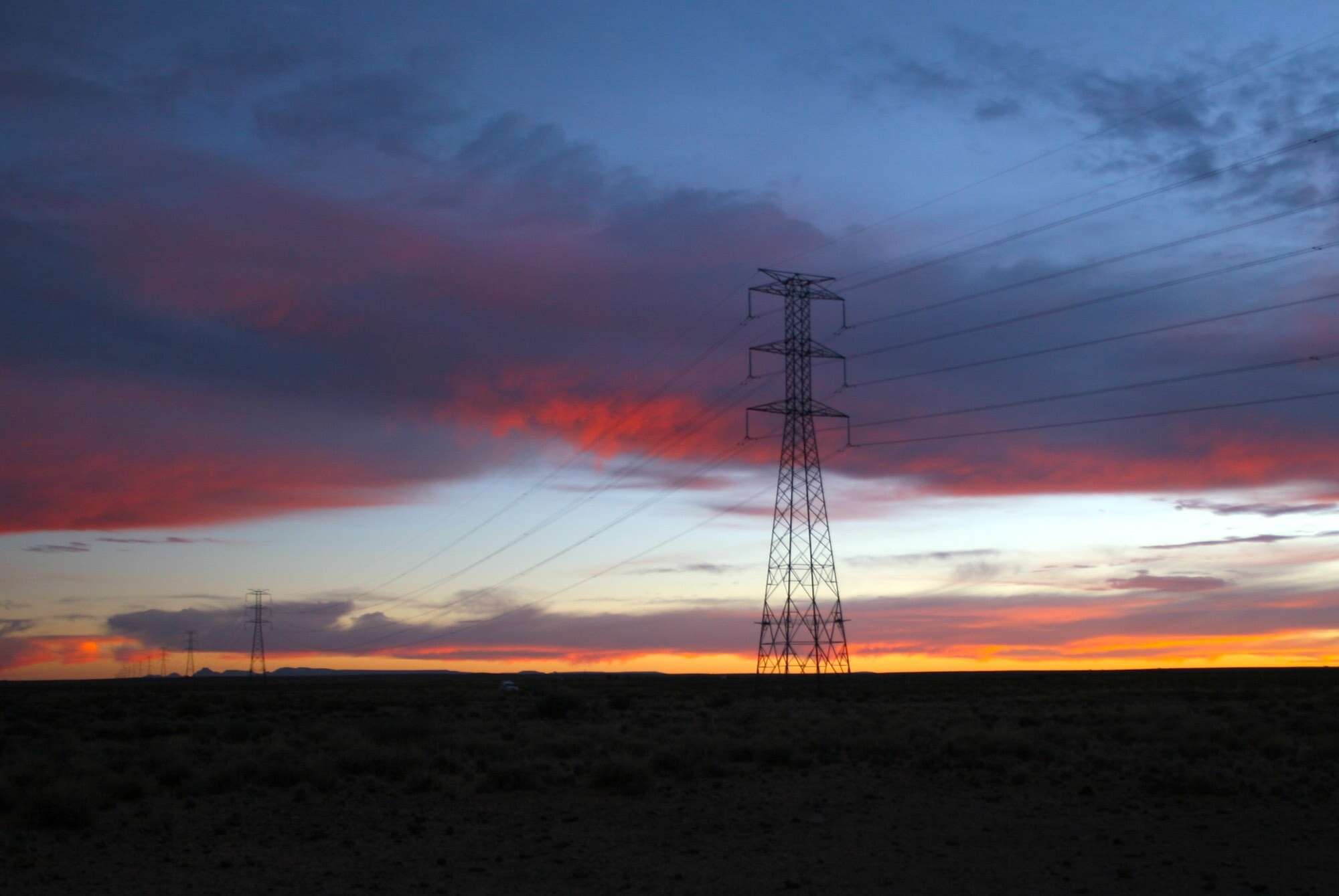
At this point, you may be wondering: why do birds hit power lines, can’t they see them? For us, the conductors are clearly visible. But remember, bustards often fly in low light when moving to and from foraging grounds, and in the case of flamingos, their long-distance flights are at night. Relatively few collisions occur close to the towers, so we can deduce that most birds see them and take avoiding action. But the cables between the towers lie horizontally, and if you are travelling at roughly the same level and thus viewing them against a dark background, instead of the sky, they are far less visible.
Bustards are even more vulnerable than other birds because their eyes are on the sides of their heads, and they are probably looking partially downwards while in flight, so they are actually blind to anything straight in front of them. In an evolutionary sense this was never a disadvantage because they are open-country birds that do not navigate through a three-dimensional landscape like birds in a savannah or woodland. Whatever the explanation, it is clear that the birds are not detecting the power lines in time to take evasive action. What can be done about it?
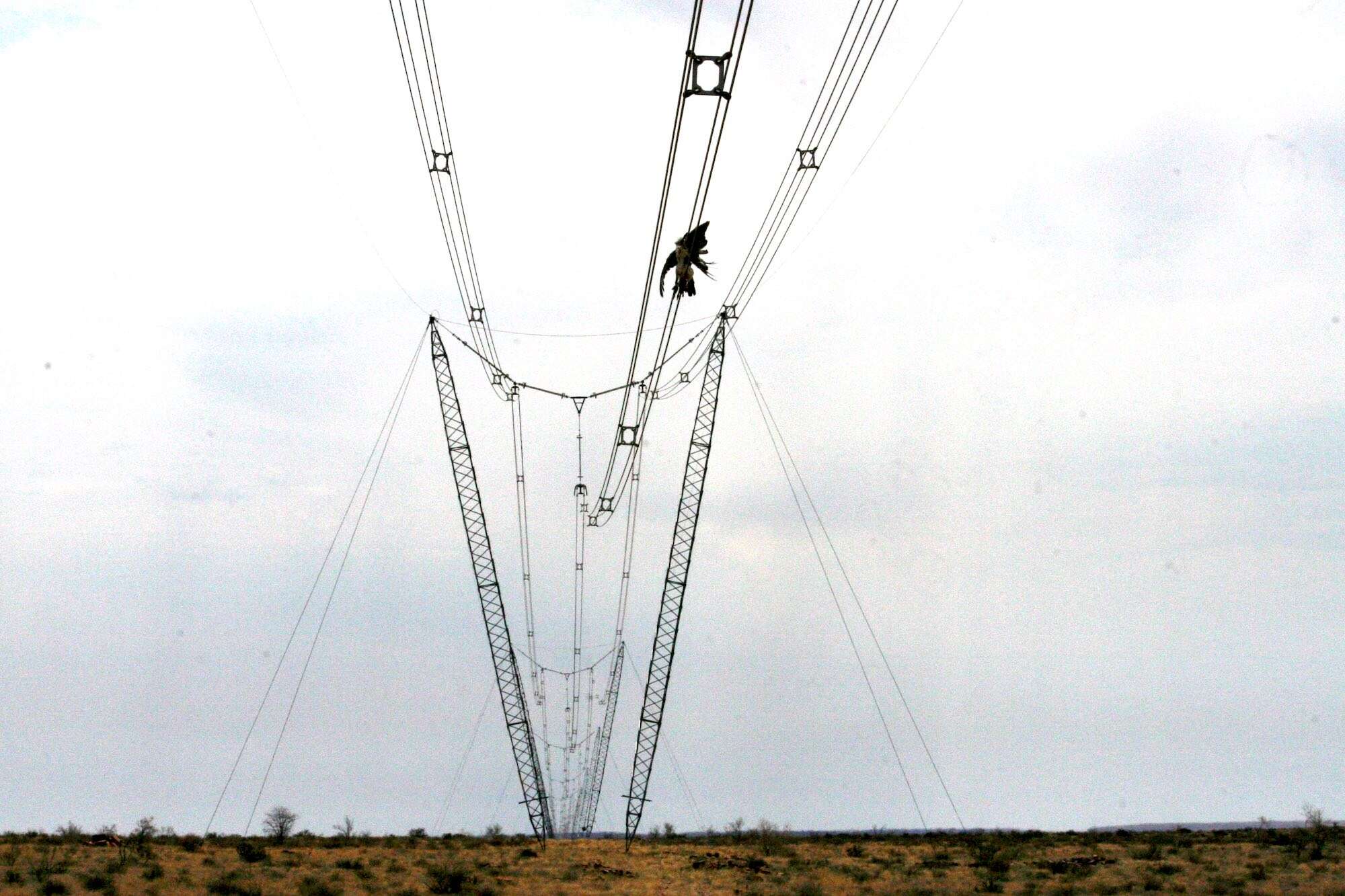
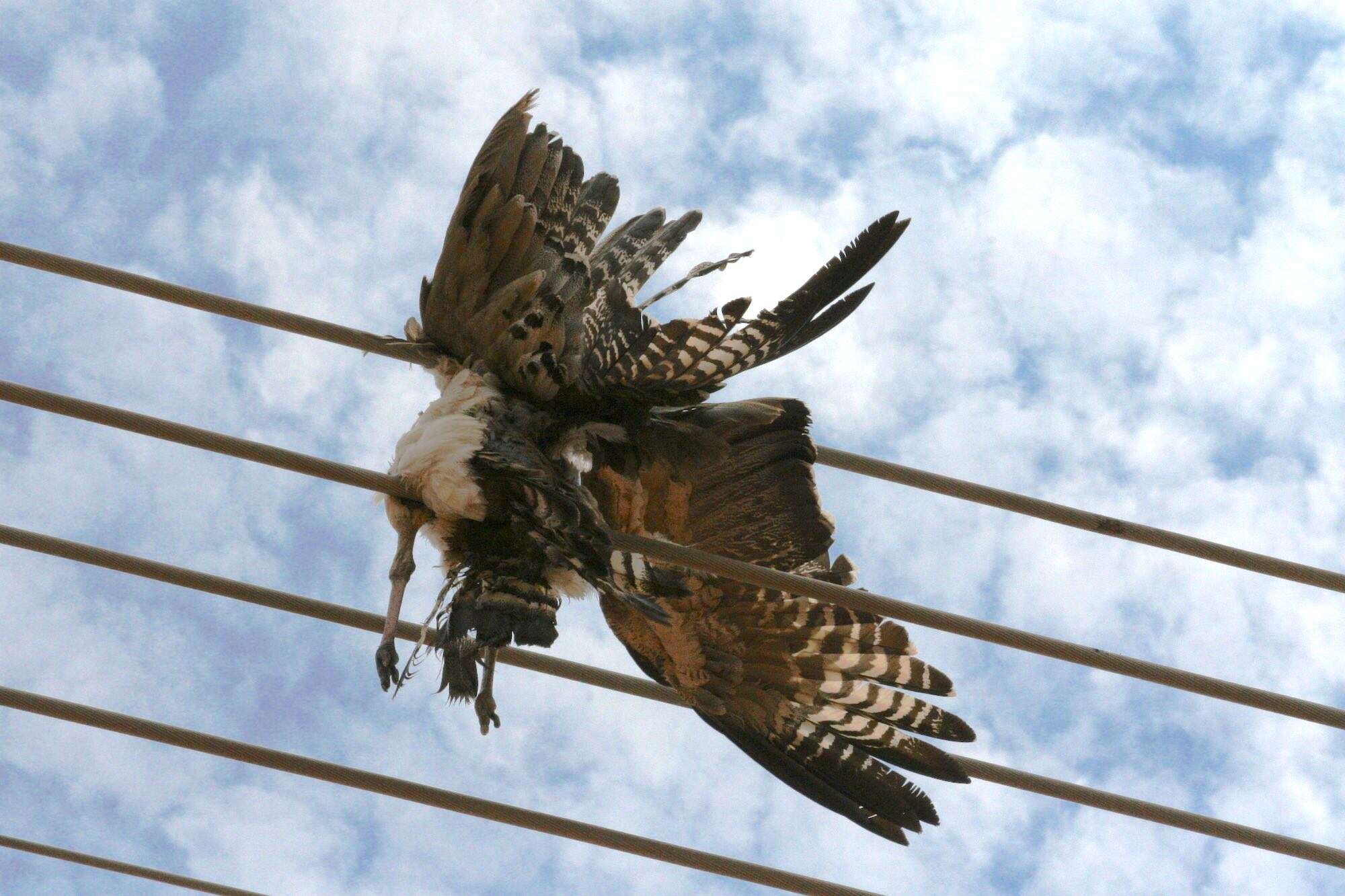
Solutions to this vexing issue have largely concentrated on attaching various flapping or coiled devices to the topmost conductor, to make them more conspicuous. These bird flight diverters have been successful in reducing crane mortalities (by an estimated 92%), and roughly halve the mortality rates for several other species. Unfortunately, the results of this method have been disappointing for bustards.
To make matters worse, installation of these devices is extremely costly. Once a line is transmitting power, switching it off to install the devices over long distances is an unfavourable option for any power utility. High rates of collisions can be prevented if new power lines are erected away from known hotspots for bird activity, like wetlands that attract cranes, flamingos and other waterfowl. Wherever diverting the power lines is not feasible, bird flight diverters should be attached in high-risk zones.
Once again, bustards pose a greater challenge than other species – they do not seem to follow any major flight paths, instead roaming widely in response to patchy flushes of insect food. Therefore, bird-wise environmental practitioners are recommending that new power lines should be routed close to roads or staggered alongside existing power lines (see text box). These interventions aim to make the power lines more obvious to bustards from a longer distance, giving them a better chance to increase altitude and thus avoid a collision.
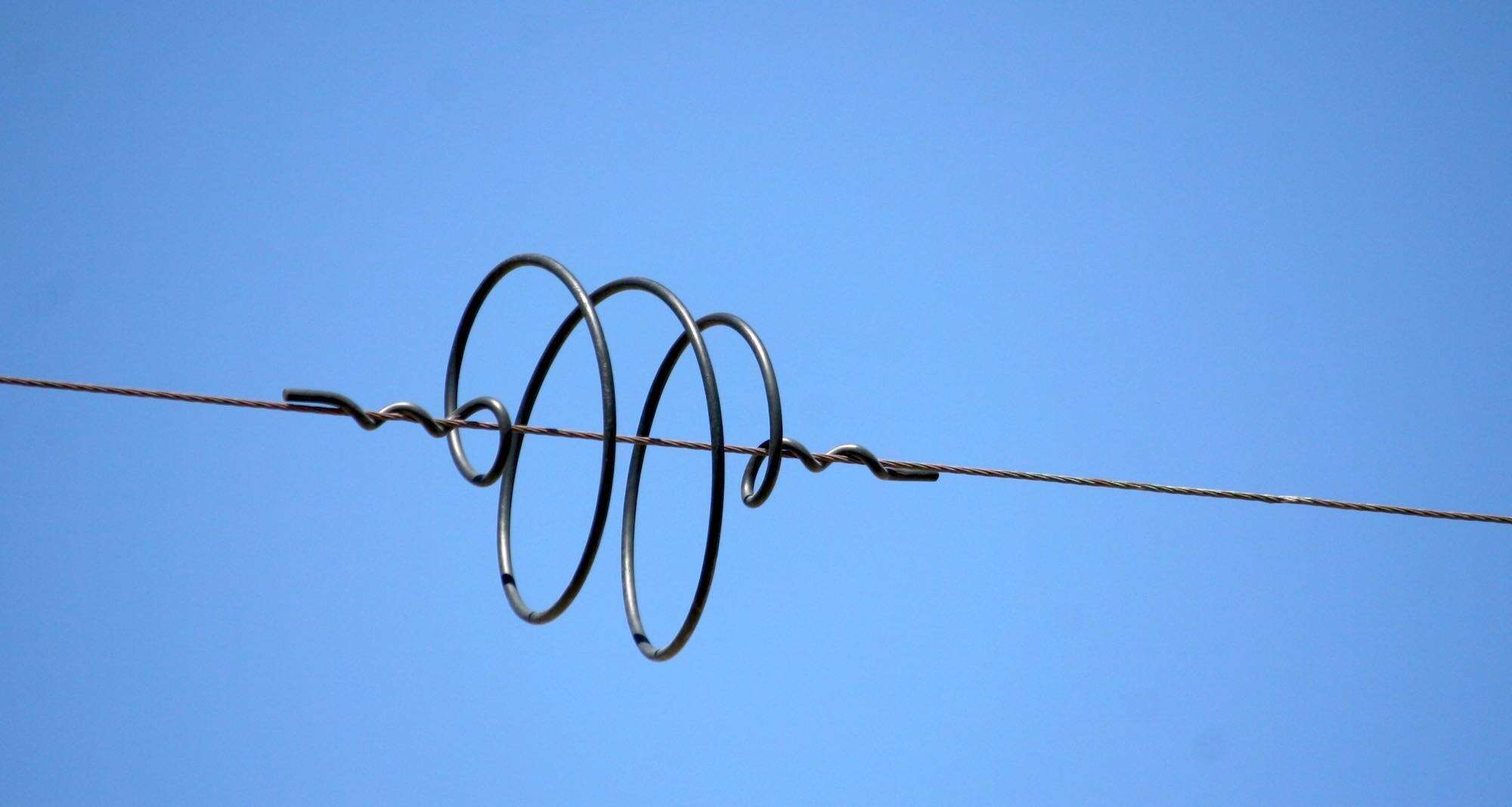
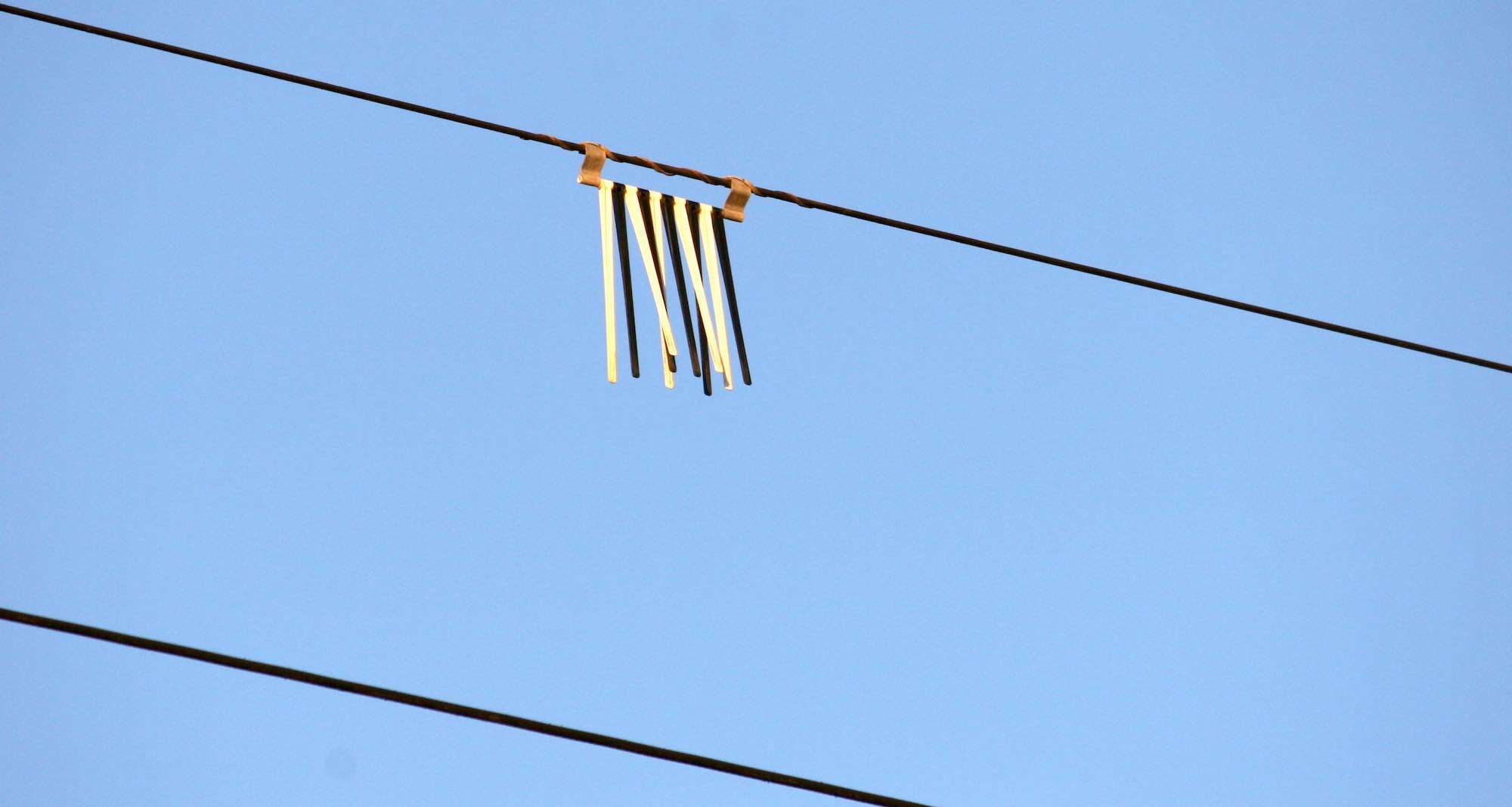
Of course the best long-term solution, but probably the least palatable, is to reduce the need for more power lines! This is where you, the public, can help – by reducing consumption and switching to local on-your-roof generation using solar or wind power. Sunny southern Africa with all its solar potential should have solar water heaters on every roof. This could reduce domestic electricity consumption by a third, and remove the necessity for bigger and longer transmission lines that are being planned to bring power from giant electricity generation projects such as Grand Inga Dam on the Congo River. Just think of all the birds that will pay the price for our insatiable need for electricity. It’s criminal.
Bird collisions with power lines are a major unsolved problem worldwide. We need to devote more attention to the issue: more systematic studies in collaboration with engineers are required to generate out-of-the-box ideas and practical solutions. The various initiatives by Eskom in South Africa, NamPower in Namibia and other utilities are moving in the right direction, but there is still a long way to go.
How staggering power lines might reduce bustard mortality in Namibia
A new 400 kV power line is being planned between Windhoek and Keetmanshoop, to increase the capacity and stability of Namibia’s electricity network. The endpoints are already connected with two power lines, one 220 kV and one 400 kV, both of which traverse prime bustard habitat and cause substantial bustard mortalities.
To mitigate these mortalities, we suggested a novel approach – to place the new line as close as possible to the established 400 kV line, and stagger the towers so that each tower is close to the middle of the span between towers on the adjacent line. This suggestion is based on extensive fieldwork in Namibia and South Africa showing that about 90% of bustard collisions with power lines occur towards the middle of the lines. It seems that bustards are better able to see or hear the towers than the lines between the towers. Consequently, if the new line is built close to the existing line with its towers optimally staggered, then bustard collisions would be reduced. Theoretically, collisions could be 67% lower than if the new line is built far from the existing one. In an article published in the Namibian Journal of Environment, we call for a scientific study to assess bustard mortality along staggered power lines, and to compare this to mortality along single or non-staggered parallel lines in similar habitats.
John Pallett thanks NCE, NamPower, NNF and the FitzPatrick Institute for African Ornithology for logistical and financial support to this project.
If you enjoyed this page, then you might also like:



For articles on similar topics, please click one of the following options:
For more great articles from Conservation Namibia see below...
Conservation Namibia brought to you by:
We use cookies to monitor site usage and to help improve it. See our Privacy Policy for details. By continuing to use the site, you acknowledge acceptance of our policy.








